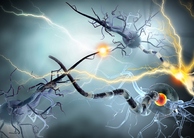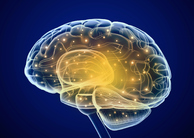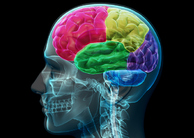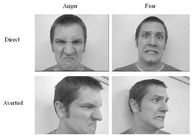The Role of Antisocial Personality Disorder and Antisocial Behavior in Crime
By
2013, Vol. 5 No. 09 | pg. 1/2 | »
IN THIS ARTICLE
KEYWORDS
AbstractAntisocial personality disorder (ASPD), also known as dyssocial personality disorder, is a mental illness that is characterized by a reckless disregard for social norms, impulsive behaviour, an inability to experience guilt, and a low tolerance for frustration. Individuals with ASPD exhibit an inflated sense of self-worth and possess a superficial charm, traits that often aid their attempts to exploit and violate the rights of others. Although the causes of ASPD are highly disputed, research has found that antisocial behaviour is linked to abnormalities in the chemistry and anatomy of the human brain. Low levels of the neurotransmitter serotonin and maldevelopment of limbic and septal brain regions are believed to affect judgement, planning, and impulse control in ASPD sufferers. Furthermore, environmental factors, including low socio-economic status, low education levels, and familial lifestyle, contribute to the onset of ASPD. Criminal behaviour is frequently associated with ASPD. Hence, investigating the biological mechanisms underlying ASPD may improve our understanding of the criminal mentality, reducing the prevalence of crime in society. Furthermore, complete knowledge of the neurophysiology of ASPD will facilitate the discovery of new treatments and therapies for ASPD patients. Antisocial personality disorder (ASPD), also known as dyssocial personality disorder, is a mental illness that is characterized by a reckless disregard for social norms, impulsive behaviour, an inability to experience guilt, and a low tolerance for frustration.18 22 Individuals with ASPD exhibit an inflated sense of self-worth and possess a superficial charm, traits that often aid their attempts to exploit and violate the rights of others.18 The Diagnostic and Statistical Manual of Mental Disorders, Fourth Edition (DSM–IV) classifies ASPD as a “Cluster B” or “erratic” illness, comparable in symptoms to borderline, narcissistic, and histrionic personality disorders.18 The DSM-IV restricts the diagnosis of ASPD to individuals who are at least 18 years of age but who have experienced antisocial tendencies before age 15.18Although the causes of ASPD are highly disputed, research has found that antisocial behaviour is linked to abnormalities in the chemistry and anatomy of the human brain.18 22 26 Low levels of the neurotransmitter serotonin22 and maldevelopment of limbic and septal brain regions are believed to affect judgement, planning, and impulse control in ASPD sufferers.26 Furthermore, environmental factors, including low socio-economic status, low education levels, and familial lifestyle, contribute to the onset of ASPD.22 Criminal behaviour is frequently associated with ASPD.18 Hence, investigating the biological mechanisms underlying ASPD may improve our understanding of the criminal mentality, reducing the prevalence of crime in society. Furthermore, complete knowledge of the neurophysiology of ASPD will facilitate the discovery of new treatments and therapies for ASPD patients. Causes and Neurophysiology of Antisocial Personality Disorder1.1 Neurotransmitters and HormonesAlthough ASPD has a genetic basis, environmental factors greatly influence its onset.22 Traumatic events may upset the standard development of the central nervous system, altering levels of neurotransmitters and hormones in the brain.18 22 Abnormalities in neuronal chemistry may then trigger the development of ASPD and cause violent behaviour.22 1.1a Serotonin LevelsResearch has shown that the neurotransmitter serotonin (also called 5-hydroxytryptamine or 5-HT) is downregulated in ASPD patients. A 1992 paper by Spoont suggested that 5-HT stabilizes information processing in neuronal circuits and mediates controlled behaviour.28 Spoont hypothesized that decreases in 5-HT levels alter the processing of sensory information, causing disinhibition of violent behaviour and promoting antisocial tendencies.28 Scientific evidence has since confirmed that 5-HT is responsible for regulating aggressive actions directed towards oneself (e.g. suicide), others, and physical property (e.g. arson).12 A study by Traskman-Bendz et al. linked low concentrations of the serotonin metabolite 5-hydroxyindoleacetic acid (5-HIAA) to violent suicide attempts committed by ASPD sufferers.30 Furthermore, Lidberg et al. and Virkkunen et al. demonstrated an association between low levels of 5-HIAA and murders committed by criminals diagnosed with ASPD.12 33 Moreover, a meta-analysis of 20 studies conducted by Moore et al. in 2002 found significantly reduced levels of 5-HIAA in antisocial individuals when compared to controls.19 In general, 5-HT is downregulated in dissocial behaviour (demonstrated above); however, scientific evidence has specifically linked serotonin hypofunction to aggression and impulsivity, two characteristics of ASPD. For instance, Coccaro et al. discovered an inverse relationship between aggressive behaviour and prolactin response to fenfluramine, a medication used to elevate serotonin levels.7 Furthermore, a study by Linnoila et al. demonstrated that impulsive violent offenders possessed lower concentrations of CSF 5-HIAA than non-impulsive violent criminals.22 Additionally, lower levels of CSF 5-HIAA were reported in impulsive arsonists compared to repeat offenders and healthy controls.32 Finally, lower concentrations of CSF 5-HIAA were shown in impulsive alcoholic offenders compared to non-impulsive alcoholic offenders and healthy controls.33 Hence, it is likely that the impulsive form of aggression displayed by ASPD patients is particularly associated with 5-HT hypofunction. 1.1b Testosterone Levels in Antisocial IndividualsTestosterone is a male gonadal hormone that affects neuronal functioning and controlled behaviour throughout the lifespan. Five studies have investigated the relationship between testosterone and antisocial behaviour in adolescents. Several studies used the “delinquency” or “externalizing” subscales of the Child-Behaviour Checklist (CBCL) to measure antisocial behaviour. Firstly, Maras et al. found higher levels of free testosterone in a group of high externalizing male subjects compared to a group of low externalizing male participants.16 Furthermore, they noted lower levels of free testosterone in subjects who did not show externalizing behaviour (controls) compared to subjects who occasionally or consistently showed externalizing behaviour.16 Secondly, Fang et al. reported a positive association between free testosterone and delinquency, as defined by the “delinquency” subscale of the CBCL.8 Additionally, studies by Granger et al. and Booth et al. used the Youth Self-Report (YSR) delinquency subscale and the Risky Behaviour Scale (RBS) to report positive correlations between free testosterone and antisocial behaviour in male subjects.5 9 Finally, a longitudinal study conducted by Tarter et al. suggested that high total testosterone levels in male children ages 12-14 predicted antisocial behaviour at age 16.29 Hence, it is likely that high levels of free testosterone contribute to the development of antisocial behaviour (and ASPD) in adolescents. 1.1c The Stress SystemScientific evidence has found that low levels of stress contribute to the development of antisocial behaviour and ASPD. The hypothalamic-pituitary-adrenal (HPA) axis and the autonomic nervous system (ANS) are responsible for regulating stress responses.10 Cortisol levels in blood, urine, or saliva and heart palpitations are measured to evaluate stress reactions.10 Animal models have been used to evaluate the effect of stress on antisocial behaviour. In a 2001 study, Haller et al. showed that rats with low levels of corticosterone (CORT) exhibit highly aggressive behaviour in a non-resident intruder fighting situation.10 Furthermore, Haller et al. showed that acute injections of CORT reduced aggressive behaviour displayed by rats in non-resident intruder fighting situations.10 It has been suggested that an increase in cortisol levels is necessary to determine appropriate behavioural responses in social situations.10 Additionally, the association between stress responses and antisocial behaviour has been investigated in human subjects. Firstly, a longitudinal study by Raine et al. found lower activity of the ANS in antisocial individuals. The authors measured the skin conductance and heart rate of 100 15-year old male subjects.24 After a 9-year period, they determined that the skin conductance and heart rate values of male subjects who were convicted of a crime were lower than the skin conductance and heart rate values of male subjects who were not convicted of a crime.24 Secondly, Brennan et al. conducted a study of the sons of criminal fathers. Male subjects who were convicted of a crime showed lower skin conductance and heart rate values than sons who were not convicted of a crime.6 Thirdly, a 2000 study by Van Goozen et al. found lower levels of cortisol in ASPD children compared to controls.31 It is known that ASPD patients often experience traumatic events involving abuse, neglect, and violence in early childhood. It has been hypothesized that habituation to stressful circumstances causes low cortisol release and stress reactivity in ASPD children.31 Hence, it is likely that low levels of stress (E.g. low cortisol levels and/or low heart rate) contribute to the development of ASPD in offenders. 1.2 Brain Structures Affected1.2a Prefrontal CortexScientific evidence has shown that the prefrontal cortex (PFC) is involved in the regulation of antisocial behaviour. Firstly, Raine et al. demonstrated an 11% decrease of PFC gray matter volume in ASPD individuals compared to healthy controls (Figure 1).25 Secondly, Pietrini et al. conducted a positron emission tomography (PET) study to evaluate the activity of the orbitofrontal PFC during antisocial behaviours in healthy individuals. Reduced activity of the orbitofrontal PFC during antisocial behaviours was reported.23 It was suggested that ASPD offenders are predisposed to antisocial behaviours because of cortical abnormalities that down-regulate the PFC.23 Additionally, a study by Amen et al. used single photon emission computed tomography (SPECT) brain imaging to evaluate prefrontal activity in antisocial offenders. Decreased PFC activity was shown in antisocial criminals when compared to healthy controls.1 To summarize, it is clear that hypofunctioning of the PFC contributes to the development of antisocial behaviour in criminals. 1.2b Superior Temporal GyrusAnatomical abnormalities in the superior temporal gyrus may contribute to the development of ASPD. A study by Muller et al. used voxel-based morphometry (VBM) to evaluate gray matter abnormalities in 17 male ASPD subjects and 17 male controls.21 Muller and colleagues reported a significant reduction in gray matter in the right superior temporal gyrus of ASPD subjects when compared to healthy controls. It was suggested that a disturbed temporal network is involved in the development of ASPD.21 Additionally, Wu et al. used VBM to compare the structural qualities of white matter in males with ASPD to healthy controls.35 Unlike the control group, the ASPD group showed significant white matter increases in the superior temporal gyrus. Temporal lobe defects have been implicated in loss of behavioural control and may contribute to violent actions.35 Hence, Wu et al. hypothesized that white matter increases in the superior temporal gyrus may explain the erratic, sometimes criminal, behaviour of ASPD patients.35 Furthermore, Wu et al. observed white matter increases in the frontal gyrus, the anterior cingulate, and the precuneus of ASPD subjects. They suggested that a lack of synaptic pruning of select brain regions may be contributing to poor neuronal functioning in ASPD subjects, potentially resulting in criminal activity.35 Finally, Raine et al. used functional magnetic resonance imaging (fMRI) to study neuronal abnormalities in violent ASPD offenders. Decreased activity of the right temporal cortex was demonstrated in violent ASPD offenders.25 Hence, it is likely that abnormalities in the superior temporal gyrus (and the temporal cortex in general) affect the development of ASPD. 1.2c AmygdalaThe amygdala is responsible for mediating memory and emotional drives. It has been suggested that the amygdala is necessary for stimulus-reinforcement learning.3 It mediates the association between emotional responses and specific conditioned stimuli in the temporal cortex, contributing to the development of morality.3 4 Particularly, the amygdala is responsible for associating harmful actions with a victim’s fear response. A study by Luo et al. found increased amygdala activity in ASPD subjects.14 Blair and Blair et al. have hypothesized that disruption in amygdala activity is responsible for disruptions in social behaviour and morality in violent offenders and psychopaths.3 4 Furthermore, a study by Raine et al. found higher levels of cavum septum pellucidum (CSP), a marker of limbic maldevelopment, in ASPD sufferers.26 Hence, it is likely that abnormalities in the amygdala (and the limbic system in general) affect the development of ASPD. 1.3 Environmental InfluencesEnvironmental factors contribute to the development of antisocial behaviour. Firstly, scientific evidence has found that the parents of antisocial children are often alcoholic or “externalizing”.22 Furthermore, ASPD sufferers may witness divorce or separation in childhood.22 Secondly, it has been shown that adopted children are at high risk of developing ASPD. Adopted children are often unable to form emotional relationships with adult figures, contributing to the development of aggressive and antisocial behaviour in adolescence and adulthood.18 22 Thirdly, physical and emotional abuse is often associated with the development of ASPD in children. Scientific studies have indicated that abusive behaviours may be learned. As a result, ASPD children may develop into neglectful and violent adults, sustaining a vicious cycle. Finally, low socio-economic status (SES) and low education levels are correlated with antisocial behaviour in children.22 The Neuroanatomy and Lifestyle of Criminals with ASPD2.1 ASPD in Sociopathic and Psychopathic CrimesThe sociopathic and psychopathic personalities are associated with antisocial behaviour and ASPD. Hare et al. studied a sample of male Canadian inmates.34 It was found that psychopathic inmates had a greater number of convictions for assault, robbery, and fraud. Additionally, psychopathic inmates committed more violent crimes (a measure of antisocial behaviour) than non-psychopathic inmates.34 The relationship between antisocial behaviour and sociopathic and psychopathic personality traits is hotly disputed. One camp believes that antisocial behaviour is a key feature of the personality construct of sociopathy and psychopathy. The other excludes antisocial behaviour from studies of sociopathic and psychopathic crimes. Hence, further research is necessary to determine the role of antisocial behaviour and ASPD in sociopathy and psychopathy.18 34 2.2 The Role of ASPD in Crimes Committed by SchizophrenicsThe Epidemiological Catchment Area Study (1980- 1985) found that ASPD is more prevalent in schizophrenics compared to members of the general population.34 Scientific evidence has since suggested that schizophrenics are more likely to commit violent crimes compared to members of the general public. Firstly, Volavka et al. found that 20% of schizophrenic patients assaulted another individual prior to hospitalization. Secondly, Lindqvist et al. followed 644 schizophrenic patients for 15 years. It was found that schizophrenics were four times more likely to have committed an aggressive crime compared to the general population.33 Finally, Teplin et al. showed that the prevalence of schizophrenics in a jail population of 728 male prisoners was three times greater than that of the general population.34 Furthermore, it has been shown that schizophrenics who suffer from ASPD are at a higher risk of committing violent crimes than schizophrenics who do not suffer from ASPD.34Continued on Next Page » Suggested Reading from Inquiries Journal
Inquiries Journal provides undergraduate and graduate students around the world a platform for the wide dissemination of academic work over a range of core disciplines. Representing the work of students from hundreds of institutions around the globe, Inquiries Journal's large database of academic articles is completely free. Learn more | Blog | Submit Latest in Neuroscience |


















